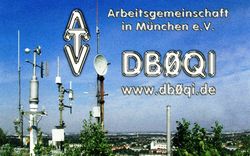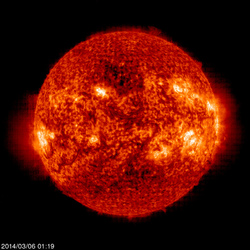 March 6, 2014 John E. Ross, KD8IDJ, Editor
| ||||||||||||||||||||
Your League: ARRL Board Requests Member Comments about Digital Modes At the January 2014 ARRL Board of Directors meeting, a resolution (see below) was passed which asked for member feedback and input pertaining to the increasing popularity of data modes. The information gathered by this investigation is to be used by the HF Band Planning Committee of the Board as a means to suggest ways to use our spectrum efficiently, so that these data modes may "compatibly coexist with each other."
As per the resolution, the ARRL Board of Directors is now reaching out to the membership and requesting cogent input and thoughtful feedback on matters specific to digital mode operation on the HF bands. The feedback may include, but is not limited to, the recent proposal the ARRL made to the FCC, RM-11708, regarding the elimination of the symbol rate restrictions currently in effect. The Board of Directors believes that member input in the decision-making process is both valuable and important as well as fostering a more transparent organization. It is to this end that we open this dialogue. Comments must be received no later than March 31, 2014, to be included in the Committee's report to the Board at the July 2014 ARRL Board of Directors meeting. Please e-mail your comments to HF-Digital-Bandplanning@arrl.org Concerned members may also contact their Division Director by mail, telephone or in person with any relevant information. WHEREAS the Board of Directors has received member input regarding the coexistence of various modes in the HF Data/RTTY subbands; and WHEREAS it is important that all member voices be heard; and WHEREAS in the opinion of the Board these issues are best addressed by education and prudent use of spectrum; BE IT RESOLVED that the ARRL Board of Directors instructs the HF Band Planning Committee to reach out to membership regarding concerns pertaining to the increasing popularity of data modes, and furthermore investigate and suggest ways to use spectrum so that these data modes may compatibly coexist with each other; and FURTHER to report their findings no later than the July 2014 ARRL Board meeting. ARRL Centennial: W1AW Centennial Operations Now in Idaho and Kentucky The ARRL Centennial "W1AW WAS" operations that are taking place throughout 2014 from each of the 50 states now are in Idaho and Kentucky. W1AW/7 will be on the air during the 2014 Idaho QSO Party March 8. The W1AW portable operations will relocate at 0000 UTC on March 12 (the evening of March 11 in US time zones), to Arizona (W1AW/7) and Ohio (W1AW/8). During 2014 W1AW will be on the air from every state (at least twice) and most US territories, and it will be easy to work all states solely by contacting W1AW portable operations.
In conjunction with the 100th anniversary of the ARRL, the ARRL Centennial QSO Party kicked off January 1 for a year-long operating event in which participants can accumulate points and win awards. The event is open to all, although only ARRL members and appointees, elected officials, HQ staff and W1AW are worth ARRL Centennial QSO Party points. Working W1AW/x from each state is worth 5 points per contact. To earn the "Worked all States with W1AW Award," work W1AW operating portable from all 50 states. (For award credit, participants must work W1AW/1 in Connecticut.) A W1AW WAS certificate and plaque will be available (pricing not yet available). The ARRL has posted an ARRL Centennial QSO Party leader board that participants can use to determine how many points they have accumulated in the Centennial QSO Party and in the W1AW WAS operations. Log in using your Logbook of The World (LoTW) user name and password, and your position will appear at the top of the leader boards. Results are updated daily, based on contacts entered into LoTW. Science and Technology: Ham Radio Will Play a Role in "HI-SEAS" Simulated Mars Mission
When Ron Williams, N9UIK, and his fellow "astronauts" head to "Mars" this spring, they'll have Amateur Radio along, just as NASA space travelers do. Williams is part of Mission 2 (of four) in the Hawaii Space Exploration Analog and Simulation or HI-SEAS, in which participants will simulate living and working for 4 months within a Martian outpost -- actually a solar-powered dome at a remote site some 8000 feet up on the slopes of Mauna Loa. Conducted by the University of Hawaii and Cornell University, the project has partial funding from NASA.
"I am confident that when we eventually go to Mars, there will be some type of involvement with the Amateur Radio community," Williams said, noting Amateur Radio's long-standing role in space missions, including aboard the International Space Station. "We would like to simulate this on this mission." Part of that will mean integrating a 20 minute signal delay into all communications, whether via Amateur Radio or the Internet. "This will simulate the distance, when greatest, between Earth and Mars," explained Williams, a clinical neuropsychologist from Indiana. At 60, he's the oldest member of the team; the youngest is 26. Williams is one of two hams on this crew increment. The other is Ross Lockwood, VA6RLW, of Alberta, Canada. "Our proposed outreach simulation to the Amateur Radio community will also involve this signal delay," Williams continued. "To the best of our knowledge, this will be unique to any Amateur Radio special event ever conducted." HI-SEAS also was able to obtain the special event call sign K6B for the project for nearly the entire length of the mission, instead of the typical 15 days. "Learning how to deal with signal delay is something that NASA is very interested in as a part of our project," Williams told ARRL. "This is a chance to experiment with this unique little barrier to communication. When we humans finally get our 'stuff' together again and resume space exploration, we will need to deal with this." Read more. Ham Radio in Space: More Amateur Radio CubeSats Released into Orbit from ISS, Launched from Japan
Several Amateur Radio CubeSats, including LituanicaSAT-1 and Litsat-1, have been deployed into orbit from the International Space Station. LithuanicaSAT-1 and LitSat-1 are Lithuania's first satellites. NASA reported that the nanosat deployments took place February 26, 27, and 28, as the onboard Expedition 38 crew prepared for the arrival of a US commercial cargo craft and the departure of three crew members. The ISS crew also released ArduSat-2 (Arduino Satellite 2, an improved 2 unit version of the single-unit ArduSat-1), UAPSat-1, and, possibly, Chasqui-1, along with the nonamateur 915 MHz SkyCube. More CubeSats are scheduled to be delivered to the station on the second Orbital Sciences commercial resupply mission in May; it's not known at this time if any Amateur Radio satellites will be aboard. Both Lithuanian CubeSats are functioning. A Brazilian station was among the first to report hearing Litsat-1's beacon on 145.850 MHz (call sign LY1LS). LithanicaSAT-1's builders at Vilnius University have requested reports for that CubeSat's FM beacon on 437.275 MHz (call sign LY5N) and submit data including audio files online. Litsat-1 was developed by the Lithuanian Space Association.
In addition to this week's CubeSat deployments from the ISS, seven Japanese Amateur Radio satellites launched successfully from Earth February 27. They include the ARTSAT: INVADER CubeSat (call sign JQ1ZKK) and six other Amateur Radio satellites. The ARTSAT: INVADER CubeSat team has announced that QSL cards will be available for reception reports. The CW beacon is on 437.325 MHz. The satellite also has a digipeater (AX.25 1200 bps) and a digitalker. The other Amateur Radio satellites are OPUSat, STARS-II (comprises mother and daughter satellites), TelkyoSat-3, ITF-1, and ShindaiSat-1. The launch took place from the Yoshinobu Launch Complex at the Tanegashima Space Center. Downlink signals have been received from all seven satellites. More information and frequencies for these satellites are on the AMSAT-UK website. Read more. Ham Radio in Space: "Ham Video" Set for Installation, Commissioning
The "Ham Video" transmitter aboard the International Space Station is scheduled to be installed on March 6, with commissioning to follow. The European Space Agency (ESA) postponed the installation and commissioning of the Ham Video system last month because NASA Astronaut Mike Hopkins, KF5LJG -- scheduled to handle the installation and commissioning -- had other priorities. Amateur Radio on the International Space Station-Europe (ARISS-EU) Chairman Gaston Bertels, ON4WF, said that a couple of the commissioning steps now may be combined, to condense the process. Hopkins, who heads back to Earth March 10, will also install the camera and support arm. Following installation the transmitter will be powered on just long enough to check cable and antenna connections. The first commissioning step is planned for March 8, when Hopkins will power up the Ham Video transmitter in "Configuration 1" -- using ARISS antenna 41 on the ISS Columbus module at a frequency 2.422 GHz and a symbol rate of 1.3 Ms/s. Transmission will start shortly before the ISS passes over the Matera ground station in Southern Italy (at approximately 1329 UTC). The ground station will stream the video over the BATC server (select "Member Streams" and "ISS").
During the pass, various configurations will be tested, and following the pass, the Ham Video transmitter will remain powered up and in Configuration 1 until the next commissioning step, planned for March 9 (approximately 1240 UTC). For about 24 hours, the digital Amateur Radio TV signal will be transmitted continuously, but with the camera powered down. Blank transmissions may occur between commissioning step 2 and step 3, which is yet to be planned. Once commissioning is complete, the Ham Video system will be used for ARISS contacts with schools in Europe. Read more. -- Thanks to Gaston Bertels, ON4WF; AMSAT News Service; ARISS Business: CQ Names New Ad Manager as Publisher Shifts Gears
CQ Communications President Richard Ross, K2MGA, has announced the appointment of David Chartock to head the company's advertising department, effective immediately. Chartock, who is not a ham, arrives "as the magazine charts new ground as a part-print, part-digital 'hybrid' publication covering the entire communications hobby," the CQ announcement said. As Editorial Director Rich Moseson, W2VU, explained, "The main print and digital edition of CQ continues to focus on Amateur Radio, while the online-only CQ Plus supplement to the digital edition of CQ covers the full spectrum of hobby radio communications, from shortwave listening and scanning to broadcast band DXing and more." Chartock succeeds Jon Kummer, WA2OJK, CQ's advertising chief since last fall. Kummer, who left in mid-February, faced a similar recalibration as the publisher of Antique Radio Classified. Chartock has more than 25 years' experience in publishing, both in editorial and sales. For 12 years he was editor of the trade magazine New York Construction News. Since 2002, he's been an independent sales representative, working with start-up publications and the annual journal of New York's Concrete Industry Board.
CQ announced recently that it's still experiencing delays with its January and February print editions, but that mail delivery of both issues was scheduled for mid-March. CQ has told its advertisers that a combined March/April issue of the magazine will follow "shortly thereafter," before it resumes single-issue publication. Online editions of the January and February issues of CQ are available for downloading and viewing. In CQ's February "Zero Bias" editorial, Moseson cited CQ readership numbers that were "not keeping pace" with growth in the number of ham radio licensees, and "the glacial pace of the overall economic recovery" among the reasons behind the CQ magazine's delivery difficulties. CQ has been in publication for more than 65 years. Word of the publications realignment came in December. Effective with the February 2014 issue of CQ, content from CQ's three sister publications -- Popular Communications, CQ VHF and WorldRadio Online -- has been incorporated into CQ Plus. The print editions of Popular Communications and CQ VHF have been phased out, and WorldRadio Online no longer exists as a separate online publication. Business: RadioShack Announces 1100 Store Closings Once a staple of electronics retailing and a ready source of small parts for ham radio homebrewers and electronics enthusiasts, RadioShack has fallen on tough times. In the wake of a substantial drop in holiday sales and a big fourth-quarter loss, the Fort Worth, Texas-based retailer has announced that it is closing 1100 of its outlets, leaving it with some 4000 stores, including more than 900 dealer franchises. RadioShack's stock has fallen by nearly 28 percent on the news.
Reported weak customer traffic at electronics retailers in general over the holiday season was reflected in a 19 percent drop in sales at RadioShack. Now market analysts have begun sounding the death knell for RadioShack, with some comparing the retailer's numbers to those of Circuit City before it went under in 2008. RadioShack once offered entry-level short-wave receivers, Citizens Band gear, and a wide array of discrete components -- including transistors, resistors, and capacitors. For a time, RadioShack marketed a fairly popular 2 meter hand-held transceiver, as well as two different models of 10 meter single-band transceivers. It failed, however, in its effort to market a dualband VHF/UHF hand-held radio. Over the years, RadioShack has offered fewer discrete components in its brick-and-mortar stores, moving that stock and other products to its online outlet, as it shifted its marketing focus to cell phones, consumer electronics, and various battery-operated gadgets. -- Thanks to Reuters, Yahoo! Finance Radio History: New Website Offers Treasure Trove of Vintage Ham Radio Photos, QSL Cards The grandson of Thomas "Tom" Russell Gentry, W5RG (SK), has developed a website that is certain to be of interest to vintage radio enthusiasts. Don Retzlaff, who is not a ham, said his grandfather was among the earliest Amateur Radio operators, getting his license in the early 1920s -- at one point identifying as NU5RG -- and remaining active until he died in 1979. The W5RG call sign has since been reissued.
"He collected QSL cards from other amateur operators all through his life," Retzlaff said of his grandfather. "In recent years I became interested in those cards and my grandfather's hobby." With the help of his father Donald Retzlaff, W5MIY, Retzlaff located all of the QSLs -- some 5700 in all -- as well as other memorabilia documenting his grandfather's ham radio activities and his time in the Army Air Corps shortly after World War I. He painstakingly scanned both sides of each card along with dozens of photos of now-vintage stations -- many with operators -- that his grandfather had collected and posted them all on a website dedicated to his grandfather and his life as an Amateur Radio operator. Among other features, the site offers an opportunity to leave comments. "This has definitely been a labor of love," said Retzlaff, who retired this year as a Principal Lecturer in the Computer Science Department at the University of North Texas. Milestones: UC Berkeley Amateur Radio Club Celebrates its Centennial The Amateur Radio club at the University of California, Berkeley (W6BB) is joining ARRL in celebrating its centennial this year. For those who are members of the club today, the magic of Amateur Radio has not worn off. "I'm still fascinated by the profundity that an electrical signal can leave the radio in front of me, travel up a wire to an antenna outside, and someone halfway around the world with an antenna outside connected to their radio can hear my voice and talk with me," club member Bill Mitchell, AG6RB, a chemistry graduate student, told UC Berkeley NewsCenter reporter Steve Hockensmith for his article, "Century-old ham radio club making waves in Richmond." As part of its celebratory activities, W6BB will take to the air with a special event station March 21-28, using the centennial-appropriate call sign W6C. Operation will be on 40, 20, and 15 meters -- and 10 meters, if it's open -- on SSB and CW. A commemorative QSL card will be available. The club also will use W6BB/100 during its centennial year.
The club's call sign went through some changes in the early years, starting out as 6XB, then 6XM, before the Federal Radio Commission granted W6BB in 1929. Although the original 1914 station is long gone, a new one was established last year at Berkeley's Richmond Field Station, on the northeastern shore of San Francisco Bay in Richmond. Yet another is being set up in Cory Hall on the university's main campus; it should be up and running this spring. The W6BB club currently has 25 members, including undergraduate and graduate students as well as some staff and faculty members. Read more. -- Our thanks to Sarah H. Maxim, great-granddaughter of ARRL Co-Founder Hiram Percy Maxim, W1AW, for calling this news to our attention! (She is the Vice Chair for Southeast Asian Studies at UC Berkeley) Milestones: Past ARRL General Manager, QST Editor John Huntoon, W1RW, SK John Huntoon, W1RW (ex-W1LVQ), of East Hartford, Connecticut, died February 23. He was 97. Huntoon served as ARRL Secretary and General Manager from 1961 until 1975. A Full Charter Life Member of ARRL, he also was the Secretary of the International Amateur Radio Union and Editor of QST. His oldest daughter, Susan Shipman, recalled that the League was an important part of her father's life. "As a child in the 40s and 50s I remember visiting the office at LaSalle Road [in West Hartford] several times and then seeing the new office in Newington later on, of which he was very proud," she said "His radio room at home was in my bedroom closet, and I spent many a night as a child listening to him talking with fellow operators all over the world."
Following his tenure as ARRL General Manager, Huntoon served from 1976 until 1980 as ARRL Treasurer. He also was active in the Quarter Century Wireless Association (QCWA) and was on its board of directors. His daughter said he remained active in the QCWA until recently. An Illinois native, Huntoon got interested in radio and electronics as a youngster, and he obtained W9KJY in 1932, while he was still in high school. Soon he was deeply involved in traffic handling and becoming very proficient in radiotelegraphy. In 1936 he was elected Illinois Section Communications Manager -- the forerunner of the Section Manager. He also served as Secretary of the Chicago Area Radio Club Council. After he helped run the 1938 ARRL National Convention in Chicago, his organizational talents caught the attention of ARRL staffers. This resulted in his becoming an Assistant Secretary of the ARRL in 1939. Huntoon developed the basic material for Learning the Radiotelegraph Code and became acting Communications Manager at the League after F.E. Handy, W1BDI, entered World War II service. In 1942, he took his own leave of absence from Headquarters for World War II service in the US Coast Guard, where he was a chief radioman. Upon his return to Headquarters following the war, Huntoon was introduced to the international ham radio scene, attending the 1949 Inter-American Radio Conference and the 1959 Administrative Radio Conference in Geneva. In 1956 he became ARRL Assistant General Manager. Read more. Milestones: Former WorldRadio Editor, CW Activist Nancy Anne Kott, WZ8C, SK CW promoter Nancy A. Kott, WZ8C, of Metamora, Michigan, died March 2. She was 58. Kott was the former editor of WorldRadio and WorldRadio Online magazines. She was an enthusiastic member of the FISTS CW Club -- the International Morse Preservation Society and a regular presence at the organization's booth at Dayton Hamvention®.
"There is something magical about being able to put two wires together and start going dit-dit-dit dit-dit," Kott told The New York Times in 2006, after the FCC had proposed dropping the Morse code requirement to acquire HF amateur privileges. "We are just going to have to get on the air and do what we do and hope for the best." Kott was an honorary member of the Texas DX Society and took part in the TDXS DXpedition to Belize in 2006, recalled Steve Smothers, W9DX, who called Kott "an accomplished brass pounder and one of FISTS' most active members and promoters." She also operated as VP2V/WZ8C in 2007. Kott was a member of the ARRL's A-1 Operator Club. Professionally she was a field representative for the Centers for Disease Control and Prevention (CDC). Survivors include her husband, Tim Lange. A service will be held at a later date. -- Thanks to The Daily DX Feature: A Century of Amateur Radio and the ARRL World War II began in September 1939 as a European war, just as World War I had. Suddenly 121 of the 250 countries on the DXCC list were off the air. At that point, the US was pursuing a course of neutrality, so American hams were allowed to remain on the air. The ARRL soon issued its own code of neutrality, which resulted in the federal government's appreciative support of Amateur Radio. Canada, along with Britain and most of the British Commonwealth, immediately shut down ham radio, however. This created an odd situation: The US (and the ARRL), following their policies of neutrality, had to treat Canada as a belligerent; no mention of Canadian Amateur Radio appeared in QST until May 1941, when QST began publishing the column "The Month in Canada." It is noteworthy that, of the 3380 Canadian hams then licensed, half were in uniform by 1941, some 900 as officers.
In those early war years, before the US entered the fray, some interesting things happened. The state of the radio art had reached the point that long-haul DX could be worked even with modest, low-cost stations. The Byrd Antarctic expeditions put KC4USA, KC4USB, and KC4USC on the air. Experimenters began to tinker with wideband FM at the upper end of 5 meters (58.5 to 60 MHz). The FCC revamped its amateur exams, eliminating essay questions (and the requirement that applicants draw schematic diagrams) and replacing them with a multiple-choice test. Exams could then be graded immediately at the examination point, sparing the applicant weeks of anxiety. At the 1940 meeting of the ARRL Board of Directors, George Bailey, W1KH, was elected League president. In June 1940, World War II hit American hams harder, when the federal government prohibited US hams from contacting hams outside the country. The FCC also prohibited all mobile and portable operation below 56 MHz, with the notable exception of Field Day! At the League's request, this policy was soon modified to allow Amateur Radio Emergency Corps drills during daylight hours on weekends, and to allow true emergency communication at any time. In Brief
FCC Chairman Names New Acting Enforcement Bureau Chief: FCC Chairman Tom Wheeler has announced that he plans to appoint Travis LeBlanc as acting Chief of the Enforcement Bureau. The Enforcement Bureau is the FCC's largest bureau and the primary organizational unit responsible for enforcement of provisions of the Communications Act, FCC rules, commission orders, and terms and conditions of station authorizations. -- FCC
German ATV Repeaters Shut Down after Interfering with Galileo GPS System: German telecommunication authorities have shut down the DB0QI 23 centimeter analog and digital Amateur TV repeaters in Munich after they interfered with a nearby control center for the Galileo GPS navigation system. The repeaters transmitted on 1276 MHz and 1291 MHz. The order did not affect the repeater input frequencies. The Deutscher Amateur Radio Club (DARC) said the specific issue involved interference to a Galileo channel on 1278.5 MHz. Amateur Radio is a secondary user of the 23 centimeter band in Germany, while the GPS system is a primary user. -- Thanks to DARC; DB0QI ISS Crew Increment to Return Home: Three members of the International Space Station (ISS) Expedition 38 crew will return to Earth aboard a Soyuz lander on March 10. They include NASA astronaut Mike Hopkins, KF5LJG, and Russian cosmonauts Oleg Kotov and Sergey Ryazanskiy. Expedition 39 crew members, cosmonauts Alexander Skvortsov and Oleg Artemyev, and NASA astronaut Steve Swanson, will replace them later this month. The K7RA Solar Update Tad Cook, K7RA, in Seattle, reports: Average daily sunspot numbers were up for the February 27 through March 5 reporting period, and average daily solar flux decreased slightly, compared to the previous 7 days. Average daily sunspot numbers increased nearly 29 points to 202.4, and average daily solar flux was off a little more than 4 points to 162.9.
The latest prediction for solar flux over the near term has declined over the past few days. The predicted average solar flux for the next reporting period, March 7-13, was 158.6 in the March 1 forecast, but on March 5 that average declined to 137.1. Predicted solar flux is 145 on March 6, 140 on March 7-8, 135 on March 9-11, 140 on March 12, 135 on March 13-14, 130 on March 15-17, 135 on March 18-20, 145 on March 21, 155 on March 22-24, and peaking at just 160 on March 25-27. It then declines to a low of 120 on April 11-13. Predicted planetary A index is 5 on March 6-7, 12 on March 8, 10 on March 9-10, 8 on March 11, and 5 on March 12 through April 4. Your reports and observations are welcome. Just Ahead in Radiosport
Visit the Contest Corral for details. Upcoming ARRL Section, State and Division Conventions and Events
Find conventions and hamfests in your area.
ARRL -- Your One-Stop Resource for Amateur Radio News and Information Join or Renew Today! ARRL membership includes QST, Amateur Radio's most popular and informative journal, delivered to your mailbox each month. Listen to ARRL Audio News, available every Friday. Subscribe to... NCJ -- National Contest Journal. Published bi-monthly, features articles by top contesters, letters, hints, statistics, scores, NA Sprint and QSO Parties. QEX -- A Forum for Communications Experimenters. Published bi-monthly, features technical articles, construction projects, columns and other items of interest to radio amateurs and communications professionals. Free of charge to ARRL members: Subscribe to the ARES E-Letter (monthly public service and emergency communications news), the ARRL Contest Update (bi-weekly contest newsletter), Division and Section news alerts -- and much more! | ||||||||||||||||||||
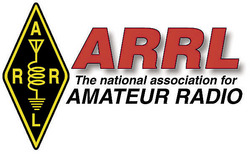
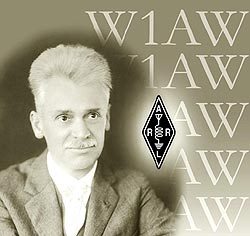
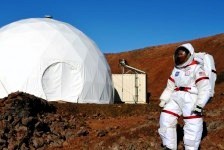
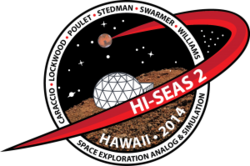

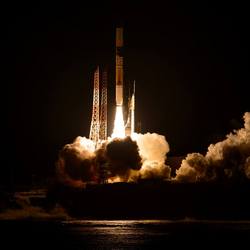
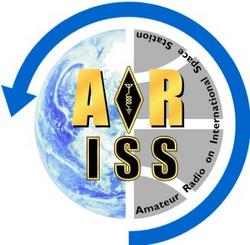
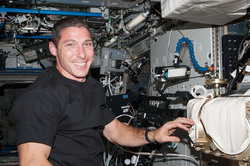
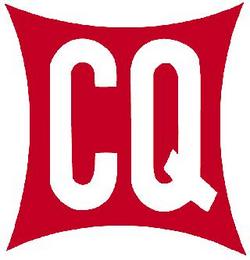
.jpg)
.jpg)
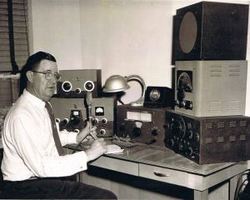
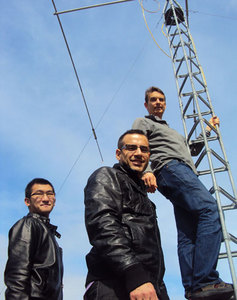
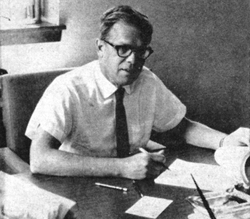
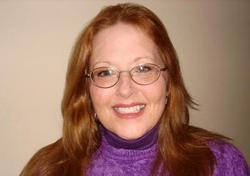
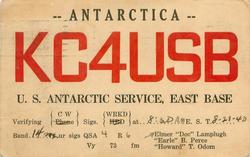
.jpg)
